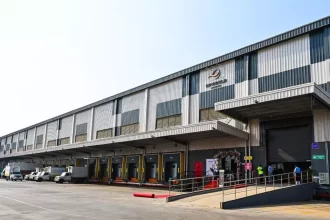Retail warehouse face mounting pressure to maintain seamless operations in a fast-paced, tech-driven environment. From inventory management to real-time communication, the need for robust connectivity is more critical than ever. A complete wireless strategy is no longer a luxury—it’s a necessity for staying competitive.
In this blog, we explore the vital role of wireless infrastructure in retail warehousing and how implementing a strategic approach can ensure uninterrupted operations and maximize efficiency.
The Growing Importance of Connectivity
Retail warehouses are the backbone of supply chains, ensuring that products reach customers swiftly and accurately. However, traditional systems often falter under the demands of modern logistics. Whether it’s scanning inventory, processing orders, or coordinating between teams, connectivity failures can lead to costly delays.
A wireless strategy ensures uninterrupted communication between devices, employees, and management systems. It provides the foundation for technologies like automated guided vehicles (AGVs), IoT-enabled devices, and advanced inventory management systems, all of which require constant connectivity to function effectively.
Challenges in Retail Warehouse Connectivity
Despite the evident need for strong wireless infrastructure, warehouses encounter several hurdles:
- Dead Zones: Large warehouse spaces often suffer from inconsistent Wi-Fi coverage, leading to connectivity blackouts.
- Device Overload: With numerous devices operating simultaneously, bandwidth congestion becomes a common issue.
- Interference: Materials like metal racks or heavy equipment can obstruct signals, disrupting seamless communication.
- Scalability Issues: As operations expand, outdated systems struggle to keep up with the growing demand for reliable connectivity.
Without a clear strategy, these challenges can severely impact productivity, accuracy, and customer satisfaction.
The Key Components of a Wireless Strategy
To address these issues, retail warehouses need a tailored wireless strategy. Here’s how to build one:
- Comprehensive Site Assessment
Conduct a thorough analysis of your warehouse to identify connectivity weak spots and high-traffic areas. This data-driven approach helps in designing a network that covers every inch of the facility. - Robust Network Infrastructure
Invest in advanced wireless solutions such as Wi-Fi 6 or private 5G networks. These technologies offer faster speeds, lower latency, and the ability to handle a high density of connected devices. - IoT Integration
Incorporate IoT devices to monitor inventory levels, track shipments, and ensure optimal resource allocation. With wireless connectivity, these devices can relay real-time data for better decision-making. - Signal Optimization
Leverage tools like signal boosters, mesh networks, and strategically placed access points to eliminate dead zones and ensure consistent coverage. - Scalable Solutions
Adopt solutions that can grow with your business. Scalable networks prevent future bottlenecks as operations expand or new technologies are introduced.
Benefits of a Complete Wireless Strategy
When executed correctly, a wireless strategy transforms retail warehouse operations:
- Increased Efficiency: Real-time communication and automated processes reduce delays and improve overall productivity.
- Enhanced Accuracy: Seamless connectivity supports technologies like barcode scanners and RFID systems, minimizing human error.
- Improved Safety: With IoT devices and robust communication tools, warehouse safety measures can be monitored and enforced more effectively.
- Cost Savings: Preventing downtime, optimizing resources, and reducing errors translate into significant cost reductions over time.
Why Now Is the Time to Act
The retail landscape is evolving rapidly, and warehouses must keep pace to remain competitive. Customers expect faster deliveries and higher accuracy, leaving no room for operational hiccups.
By embracing a complete wireless strategy, retail warehouses can unlock new levels of efficiency and meet the growing demands of the market. Don’t let outdated systems hold your business back. Invest in the connectivity solutions that drive success today and tomorrow.







